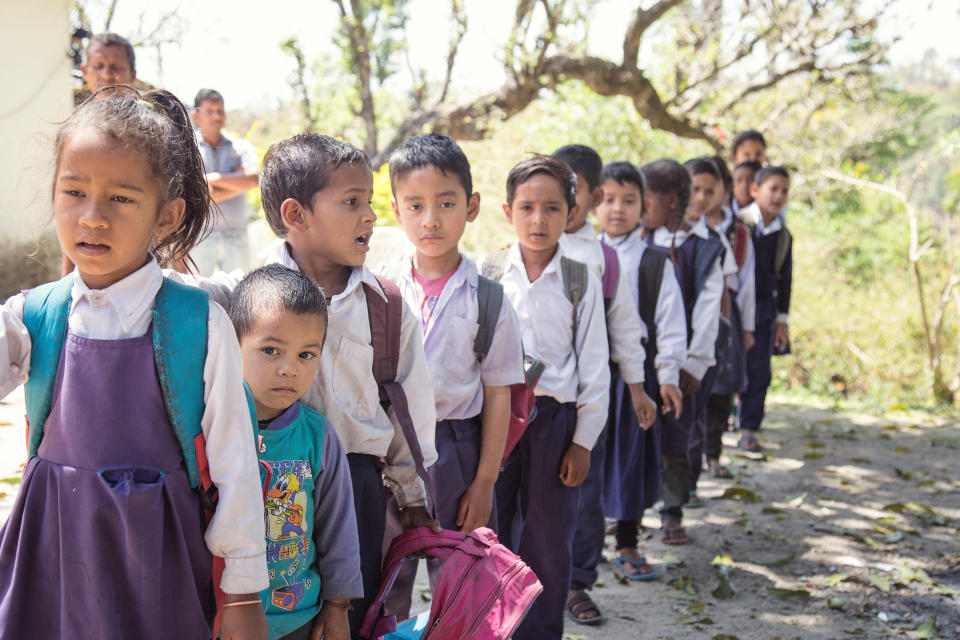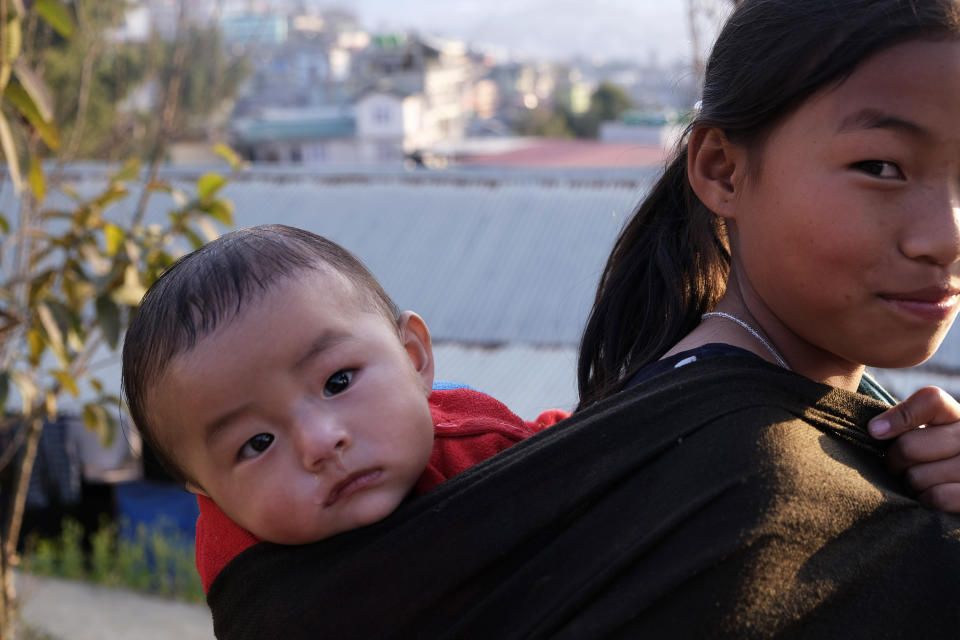Health, poverty, education and gender parity: The state of India's young children

As per a report titled ‘The State of Young Child in India,’ formulated by civil society organisation, Mobile Creches, out of 159 million children aged below 6 years in India, 21 per cent are undernourished, 36 per cent are underweight, and 38 per cent do not receive full immunisation.
The report, a comparative analysis of public data from 2005-06 and 2015-16, introduces the Young Child Outcomes Index (YCOI) for the under 6s The index measures nutrition, health and cognitive growth of children up to the age of 6, using indicators such as stunting, net attendance at the primary school level and Infant Mortality Rate (IMR). The overall score for India between a scale of 0-1 is 0.585, a marginal increase from 0.443 in 2005-06.
The report also brings out the Young Child Environment Index (YCEI) for the year 2015-16, which understands the policy and environment that influence a child’s well being. The Index uses five enablers as influencing a child’s well-being outcomes – poverty alleviation, strengthening primary health care, improving education levels, safe water supply, and promotion of gender equality. India has scored 0.672 on this scale.
Investing in childhood
Poor active investment in early childhood has held back India’s performance in the Human Development Index (HDI). The country ranks 130 and is placed in the medium development category. Taking into account expenses on child nutrition, education, healthcare and other protection services, India only spends Rs 1,723 per child, as of 2018-19 - an insufficient amount.
Indian states also vary drastically from each other in parameters of health, nutrition and cognitive growth. While Kerala topped the list of best performers, Bihar has done a poor job keeping its children healthy.
Kerala scores 0.858 in the Young Child Outcomes Index (YCOI), an improvement from the 0.796 in 2005-06. A major reason for this is the initiatives the state has taken in ensuring early childhood care, maternal and neonatal care and in bringing out pro-poor initiatives.
The state has also managed to bring down Infant mortality rate to a single digit of 7 (per 1000 births), while the UNICEF and WHO have designated Kerala as the world’s first ‘baby-friendly state’ for its effective promotion of breast-feeding.
Performance indicators:

We take a look at how the country has performed across the various indices:
Gender Index
The northeastern states of Meghalaya (0.745) and Mizoram (0.746), Kerala (0.732), Arunachal Pradesh (0.733) and Chhattisgarh (0.738) have performed well above the country average of 0.680 in the gender index. Haryana (0.583), Punjab (0.601), Jammu & Kashmir (0.616), Maharashtra (0.644) and Rajasthan (0.644) are the worst-performing states.
The country has witnessed an increase in gender inequality – with even areas and communities known for gender parity showing a greater preference for sons.The report suggests that improved education and economic standards do not necessarily override gender discrimination in society. Many economically well-off families in the rural and urban areas use technology to identify the sex of the foetus and take steps such as abortion, in case of a female foetus.
Research indicates widespread neglect of the girl child, who is often also more susceptible to maltreatment. Further, the high under-5 mortality rate for girls can be largely attributed to the differentials in the distribution of food and resources, access to healthcare and malnutrition, in families.
Orissa, however, is taking action towards bringing in more parity in distribution through its schemes such as the Mamata conditional cash transfer programme, targeting pregnant and lactating women, and aiming at improving women’s health and nutrition and bringing inequitable right to property.
A recent Supreme Court judgement providing daughters equal birthright to inherit property is also a step forward towards bringing in gender parity.
Poverty index
With a score of 0.966, Goa tops the Poverty index with Kerala (0.934), Himachal Pradesh (0.918), Sikkim (0.916) and Punjab (0.914) in the top five. Chhattisgarh (0.404), Jharkhand (0.451), Manipur (0.452), Arunachal Pradesh (0.488) and Odisha (0.522) are below the country average of 0.695. At 0.59 per cent, Goa has the lowest percentage of its population below the poverty line, while Chhattisgarh has nearly 40 per cent of its population below the poverty line.
This inequality in wealth is compounded by lack of access to government food security schemes and programmes. Further, states with high levels of poverty and continuous male migration also have implications on infant and young child feeding indicators. This is because with male members migrating, the burden of agricultural work and labour falls on women members, who then find less time to gather food (vegetables and fruits from fields) or cook separately for smaller children, who are fed an adult diet which may not meet their requirements.
Health index
Punjab (0.870) tops the health index, while Goa (0.862), Sikkim (0.798) and Kerala (0.787) are above the national average of 0.548. Nagaland (0.235), Arunachal Pradesh (0.264), Assam (0.370), Gujarat (0.410) and Uttar Pradesh (0.418) are the bottom five performing states.
Experts deem the first 1000 days of a child are incredibly crucial. The first 270 days in the womb require adequate nutrition and well-being of the mother while the remaining 730 days require timely immunisation, proper infant and young child feeding (including breastfeeding and supplementary feeding). Poor nutrition till the age of three can prove to be detrimental to the cognitive ability of the child.
While the prevalence of Anaemia among children (6–59 months) is less than 50 per cent in Goa, Manipur, Mizoram and Kerala, for the remaining states, prevalence is in the range of 50 to 70 per cent.
India also faces the burden of a high out of pocket expenditure per delivery, which in a public health facility amounts to INR 3,200. Financial assistance received for institutional delivery under the Janani Suraksha Yojana (JSY) covers only 36.4 per cent of all mothers.
States face challenges from mosquito-borne diseases like malaria, dengue, chikungunya and encephalitis with four states - Uttar Pradesh, Bihar, West Bengal and Assam, sharing the maximum burden of encephalitis.
There is also a huge disparity in immunisation coverage across the country. The percentage of fully vaccinated children in Uttar Pradesh (23 per cent), Rajasthan (27 per cent), Assam (31 per cent), Bihar (33 per cent), Jharkhand (34 per cent) and Madhya Pradesh (40 per cent) are lower than the national average.
Two-thirds or more of children in Tamil Nadu, Goa, Kerala and Himachal Pradesh are fully immunised. However, on a positive note, immunisation coverage in India between 2005–2006 and 2015–2016, increased by 18 percentage points (from 44 per cent to 62 per cent).
Safe Water Supply Index
Punjab (0.990), Bihar (0.980), Sikkim (0.973), Uttar Pradesh (0.960) and Goa (0.958) have scored above the national average of 0.887, while Manipur (0.344), Meghalaya (0.639)., Andhra Pradesh (0.693), Jharkhand (0.751) and Delhi (0.775) lag behind the rest of the country.
Access to safe and clean potable water is directly linked to health and improved living conditions. Under the Jal Jeevan Mission, which aims to provide safe drinking water (55 litres per person per day) to every rural household through tap connections by 2024, Bihar, Goa, Telangana and Puducherry are working towards ensuring 100 per cent connectivity of every rural household with a tap connection by 2021.
Education Index
Kerala (0.907) the north-eastern states of Mizoram (0.877), Tripura (0.804), Goa (0.790), and Delhi (0.780) are front runners, while Rajashthan (0.450), Bihar (0.460), Jharkhand (0.491), Arunachal Pradesh and Andhra Pradesh (0.530) have performed below the country average of 0.598.
The first 1000 days, or early childhood, is when a child’s brain undergoes the most development, laying the foundation for cognitive, intellectual and skill development. The report states the need for home-based early learning right from the infant stage through stimulation, in the form of conversations in the mother tongue, singing lullabies, playing games with them.
India lags behind in Early Childhood Children Education programmes (ECCE). As per the report, just over 3 million children attended a formal pre-school centre or a pre-primary section in primary schools in 2014–2015. Nearly 27 per cent of children aged 3–6 years did not attend any pre-school facility and just about 58 per cent of those enrolled attended regularly. Government pre-primary schools are also characterised by low enrolment and fewer teachers, as compared to private schools.
There is a wide difference among states as well. Nagaland (96.5 per cent) has the most number of primary schools having the pre-primary section, followed by West Bengal (93.6 per cent), Meghalaya (82.3 per cent), Sikkim (81.1 per cent), Assam (74.7 per cent) and Kerala (69 per cent).
The report highlights the need for a holistic approach, providing a happy, healthy environment where the child has access to good nutrition, health, play and intellectual stimulation, to ensure overall development. This would require the active involvement of parents and caregivers, the Government and all other stakeholders.

 Yahoo Finance
Yahoo Finance 